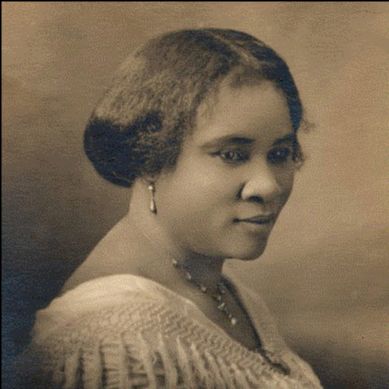-
play_arrow
WURD Radio

Corporations vowed to diversify their boards (so much for the racial reckoning)
By Madhusmita Bora
Maria Frizelle Roberts is tired of waiting.
An alum of the University of Pennsylvania, University of California at Berkeley and St. Joseph’s University, she has an impressive academic and corporate resume. As the CEO of MFR Consultants, Inc., a full-service technology and business advisory company, she leads an interdisciplinary team and sits on nonprofit boards including the Philadelphia African American Chamber of Commerce.
Despite these accomplishments, she hasn’t been invited into the boardroom.
Those appointments require nominations from existing board members and company executives. Unlike non-profit board positions, which are voluntary and almost always unpaid work with a donor or fundraising commitment, independent corporate board jobs are lucrative and draw from an extremely closed circle of contenders, usually white men. “It’s truly frustrating to see the same plantation mentality,” Roberts said. “Women other than women of color are getting on boards at a higher rate and chipping away at the glass ceiling, at least you can see through that ceiling. For Black women, it’s a concrete ceiling. We need a sledgehammer because we can’t even see through the ceiling.”
The civic unrest after the slow, torturous murder of George Floyd for all the world to witness and a succession of killings of Blacks by police led to the racial reckoning of 2020, prompting corporate America and big financial institutions to make several pledges, including changing boardroom compositions to reflect the communities they serve. Companies such as Equilar started tracking boardroom diversity data. In September 2020, three Silicon Valley executives, with a mission to improve Black representation in boardrooms, launched The Board Challenge. Participating companies pledge to appoint a Black director within the year. If the company already has a Black director, they make a promise to introduce their network to The Board Challenge and leverage influence to improve representation in other corporate boards. More than 75 companies have taken the pledge. Boardroom diversity is now occupying center stage in legislative, regulatory, academic, public and media discourse.
But, have these conversations transformed to tangible actions? Are Diversity, Equity and Inclusion (DEI) efforts making boards more nonwhite? Does having representation at the top move the needle for employees, businesses, homeowners and communities of color? How much influence can an individual or a small group assert on behalf of a community when they are compensated as part of their representation?
According to Board Prospects, Black members make up only 5.4 percent of the nearly 27,000 board members within the Russell 3000 (an index tracking the 3,000 largest publicly traded U.S. stocks weighted by market capitalization). Sixty percent of the listed companies on the index do not have a single Black board member. There is not a single for profit company out there that has a boardroom reflecting the demographics it serves, experts said.
Nonwhite representation is insignificant in the highest corporate jobs as well. Currently, only four Black CEOs head Fortune 500 companies. They are: Marvin Ellison of Lowe’s, Thasunda Brown Duckett of TIAA, Rene Jones of M&T Bank and Rosalind Brewer of Walgreens Boots Alliance. Those numbers are problematic because boardrooms prefer to draw its members from C-suites.
To be in parity with current population size, there should be at least 60 Black CEOs heading corporations, said Sulaiman Rahman, CEO of DiverseForce, a strategic human capital solutions firm specializing in cultivating diverse leadership pipelines and inclusive ecosystems. He said Black people are grossly underrepresented in C-suites because there is no intentional mentoring and development of a pipeline.
“Diversity in the corporate sector is dying in the middle of the organization,” he said. “That’s why when you look at higher levels you see less and less of Black and Brown people.”
The Philadelphia Business Journal reports that just 17.7 percent of boardroom seats in the 30 Philadelphia-area Fortune 1000 companies are filled by people of color. White men hold 61 percent of those positions, and white women 21.3 percent. Only 8.2 percent of those jobs are held by Black men, while Black women occupy 1.3 percent.
Author Bethany B. Wilkinson, in her book “The Diversity Gap,” said, “In an organization where white male leadership has been the historical norm, diversity initiatives often cater best to the needs of the white people (who share the racial identity of the historical leadership) and men of color (who share the gender identity of historical leadership).”
“This leaves gaping holes in the experiences and opportunities afforded to women of color,” she wrote.
Roberts, who has more than three decades of experience in corporate C-suites and is the chairperson at Merakey Total Health and vice chair of the Economy League of Greater Philadelphia, said there’s a subconscious bias against accomplished Black women in particular. Corporations often tokenize people of color by limiting their numbers. By doing so, they also limit their powers and ability to implement change.
“They can’t see past the color of our skin,” she said. “There’s a fear that if you put a Black woman on the board who is comfortable in their skin and knowledge, they will speak up and challenge – which is frequently viewed as being difficult.”
Only a few individuals such as Charisse R. Lillie have successfully broken the concrete ceiling that Roberts refers to. Lillie, CEO of CRL Consulting LLC, a former fellow and vice president of community investment for Comcast Corporation and former president of the Comcast Foundation, sits on multiple corporate boards such as PECO, Independence Health Group Inc. and The Penn Mutual Life Company. She also serves on the Regional Advisory Board of PNC Bank, PA/SNJ/DE and the corporate Advisory Board of KnectIQ, Inc. To get on a corporate board one needs to know the CEO or an executive at the senior position, she said. Historically women, especially women of color, have been excluded from these networks and that makes it an uphill battle. For each board position she has occupied, she was granted access to the boardroom by someone in her network.
The tale of monochromatic boards
For most of the last century, existing board of directors at publicly traded companies have nominated their successors, said Joseph Blasi, director of the Institute for the Study of Employee Ownership and Profit Sharing at Rutgers University. The number of people nominated always corresponds to the number of vacancies.
“Unfortunately it’s never been a competitive election and shareholders are asked to vote on an entire slate,” he said.
Sometimes, shareholders can withhold votes on certain members of the slate, and the board might honor the protest vote. But that rarely happens. In recent years, there has been a practice called proxy access which allows long-term shareowners to place a limited number of alternative board candidates on the proxy ballot.
“Either way it’s a very cumbersome process,” Blasi said. “Typically management will oppose and shareowners have to hire lawyers and work with the media to build public awareness and opinion.”
Because of how the system works, corporate boardrooms have always failed to represent people of color or those from diverse backgrounds. Candidates have historically been drawn from a very narrow pool of mostly white men with generational wealth, who belong to the same social network. Occasionally there is representation from nonwhite communities. But those candidates tend to come from wealthier backgrounds with access to mostly white institutions.
In the past, most of the people who become directors are former attorneys or executives from large public accounting firms and C-level executives, said Toya Lawson, partner at Bridge Partners, an executive search firm with a mission to diversify leadership teams.
“Those fields have been dominated by white men for a very long time,” she said.
When a company has an all-white board, diversifying becomes a challenge, said Alexandra Thornton, senior director for tax policy at the Center for American Progress.
“If you start with a largely white male board, then they are not reaching beyond their arm’s length to find their successor,” she said.
The other challenge: Many of the boards do not have term limits, and members sometimes serve until they are 75 years old. It takes forever for a position to open up.
To read this article in full, visit wurdworks.com.
Madhusmita Bora (she/her) is a writer, teacher and an award-winning multidisciplinary artist. She has previously worked for The Philadelphia Inquirer, Indianapolis Star and St. Petersburg Times (now Tampa Bay Times).
This story is a collaboration between WURD Radio’s Lively-HOOD initiative, WHYY and URL Media. It is part of a series called The Future of Work, which explores what work will look like as we move beyond the pandemic. It’s produced with funding from the William Penn Foundation and the Lenfest Institute for Journalism. WURD/Lively-HOOD is one of more than 20 news organizations producing Broke in Philly, a collaborative reporting project on solutions to poverty and the city’s push towards economic mobility.
THE WURD WEEKLY NEWSLETTER
Black Talk Media sent straight to your inbox.
BECOME A MEMBER
The forWURD Movement is your way to
protect and preserve Independent Black Media.
Written by: wurdradio21stg
Bethany B. Wilkinson Black CEOs Board Challenge Charisse R. Lillie DiverseForce Economy League of Greater Philadelphia Fortune 500 George Floyd Independence Health Group KnectIQ Lively-HOOD Madhusmita Bora Maria Frizelle Roberts Marvin Ellison Merakey Total Health MFR Consultants peco Penn Mutual Life Company pnc bank Rene Jones Rosalind Brewer sulaiman rahman Thasunda Brown Duckett The Future of Work
Similar posts
Featured post
Latest posts

This week on WURD: Trump’s “mega bill,” Medicare cuts, U.S.-Iran tensions

Teens Cultivate Soil and Safety at Sankofa Community Farm

This week on WURD: Musiq Souldchild shares his journey, PA’s budget delays, Sherri Shepherd’s latest role

This week on WURD: Philly teachers on strike, SEPTA’s funding issues, Sankofa through farming

This week on WURD: I.C.E. in Los Angeles, “No Kings Coalition” march, Philly Black business market
Current show
Radio Courtroom
Criminal Defense Attorney and Activist Michael Coard, has more than 15 years of trial experience and as many years in his work to break barriers that discriminate and disenfranchise citizens in the African American Community. Each Sunday, Coard and featured guests, delivers a perspective on handling legal situations that plague the growth and social stability in our region, offering the best of the best in legal advice – for free.
closeUpcoming shows
Caribbean Connection
7:00 pm - 10:00 pm

UnPacking with Eric Cole
10:00 pm - 12:00 am

Funky People Radio
12:00 am - 2:00 am

The Let Out
2:00 am - 6:00 am

Sunday Morning Praise
6:00 am - 11:00 am
WURD Radio LLC © 2012-2021. All rights reserved.







Post comments (0)